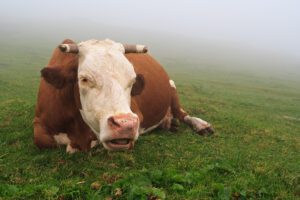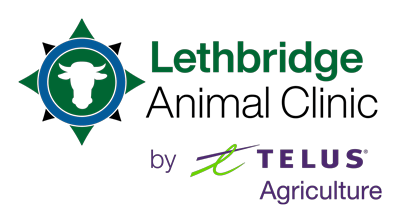10 Most Common Diseases in Cattle
Running a farm or a ranch in Lethbridge, Alberta, requires a good understanding of the most common diseases in cattle. Awareness is the first step to prevention and treatment, ensuring a healthy herd and efficient operation. If you notice any signs of illness, don’t hesitate to call the Lethbridge Animal Clinic at (403) 327-4150 or book an appointment.

Bovine Respiratory Disease (BRD)
BRD, often referred to as shipping fever, is a complex disease that can cause severe respiratory illness. The most common symptoms include coughing, fever, and difficulty breathing. Early detection and treatment are crucial to prevent fatalities.
Mastitis in Cattle
Mastitis is an inflammation of the mammary gland, often resulting in decreased milk production and quality. Signs include swollen, hard, or warm udders, and abnormal milk. Prompt veterinary attention is vital to manage this disease.
Bovine Viral Diarrhea (BVD)
BVD can manifest as respiratory illness, reproductive problems, or immunosuppression. It can cause a significant economic impact due to production losses. Vaccination is the primary preventative measure.
Bovine Spongiform Encephalopathy (BSE)
Commonly known as Mad Cow Disease, BSE is a fatal neurological disorder that affects the central nervous system of cattle. Though rare, it’s crucial to follow feeding regulations to prevent this disease.
Johne’s Disease
This chronic, progressive bacterial disease affects the intestines. It causes diarrhea, weight loss, and can be fatal. Johne’s disease is challenging to manage once established in a herd, emphasizing the importance of preventative measures.
Infectious Bovine Rhinotracheitis (IBR)
IBR, caused by a herpesvirus, affects the respiratory and reproductive systems. Symptoms may include nasal discharge, coughing, and decreased milk production. Vaccinations are available to help control this disease.
Foot and Mouth Disease
Although not currently present in Canada, Foot and Mouth Disease can cause severe economic loss. It’s a highly infectious disease causing fever, blister-like sores, and salivation. It’s crucial to maintain strict biosecurity measures to prevent potential outbreaks.
Leptospirosis
A bacterial disease causing reproductive issues, such as abortion and stillbirth, Leptospirosis can affect both cattle and humans. Vaccinations and rodent control can help prevent this disease.
Calf Scours
This term refers to diarrhea in calves, which can result from various infections. It leads to dehydration and, if untreated, can be fatal. Good hygiene and colostrum management are key in prevention.
Tuberculosis in Cattle
Bovine Tuberculosis, though rare in Alberta, can affect cattle’s lungs and other organs. Testing and culling infected animals are common control measures.
Conclusions and Preventive Measures
Understanding these common cattle diseases and their symptoms is the first line of defense for your herd. Here are some key preventative measures to remember:
Regular Veterinary Check-ups
A regular health check by a veterinary professional helps to catch any illnesses early.
Contact us at Lethbridge Animal Clinic to arrange for periodic health check-ups.
Vaccinations
Vaccinations play a vital role in preventing many of the diseases mentioned above. Always ensure your cattle are up-to-date with their shots.
Biosecurity Measures
Implementing strong biosecurity measures, such as isolating new animals and controlling wildlife access, can prevent disease introduction and spread.
Healthy Feeding Practices
Feeding your cattle a balanced, nutritious diet, and avoiding prohibited feedstuffs, are crucial steps in disease prevention.
To discuss cattle health or schedule a check-up, call us at (403) 327-4150 or book an appointment at https://lethbridgeanimalclinic.com/.
Let’s ensure the health and productivity of your herd together.
